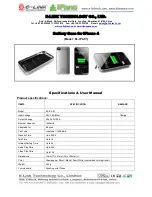
To increase the pressure in the fork leg:
Remove the rubber protection cap.
Tighten the threaded pump adapter on the air valve and inflate till reaching the pressure you wish.
Refit the rubber protection cap.
The pressure values in the table are given as a mere example and can be changed to meet the biker’s riding style and the track condition.
Setting: Rebound adjustment
Right fork leg:
With the rebound adjuster you can control the return speed of the fork after compression.
The right rebound speed setting makes the bike stable letting it follow the variations in the terrain and any obstacles.
If the fork setting is too reactive this will make the rear suspension instable and the mountain bike will have a tendency to snake. A too slow setting
however will cause problems when dealing with multiple obstacles where the suspension can't return to its fully extended position fast enough
between one obstacle and the next.
Turning adjuster (
A
) clockwise increases the hydraulic damping making the fork slower during the
rebound phase.
Turning adjuster (
A
) counter-clockwise decreases the hydraulic damping making the fork more reactive
during the rebound phase.
Do not force the adjuster beyond its limit of travel.
Setting: Compression adjustment
Right fork leg:
With the compression adjuster you can control the compression speed.
The compression setting is at the user's discretion and must be set to prevent the suspension bottoming out.
A "hard" compression setting gives you more stability and lets you ride more aggressively making the mountain bike more reactive, vice versa a
"soft" setting means less stability but also a less "nervous" ride.
Turning adjuster (
A
) clockwise increases the hydraulic braking during compression and, under the same
load conditions, reduces the fork travel.
Turning adjuster (
A
) counter-clockwise decreases the hydraulic compression damping making the fork
more reactive on harsh grounds.
Do not force the adjuster beyond its limit of travel.
© Marzocchi Suspension
2006
-
66 SL



































